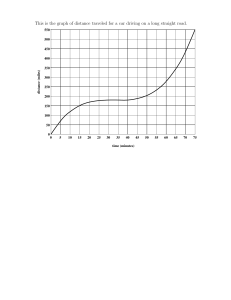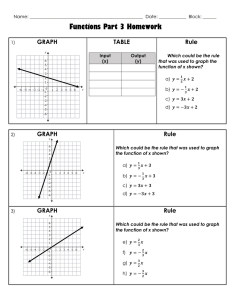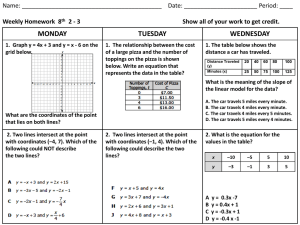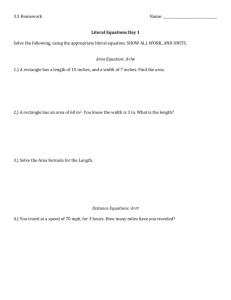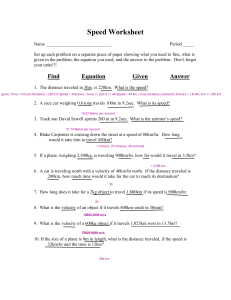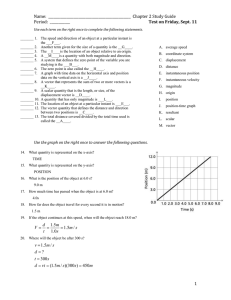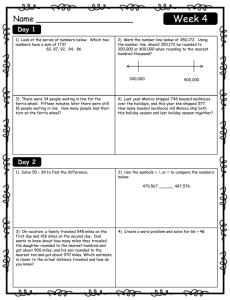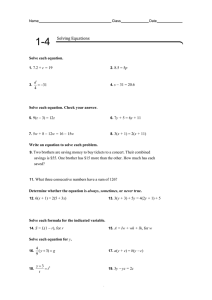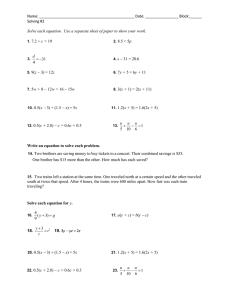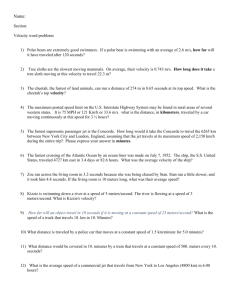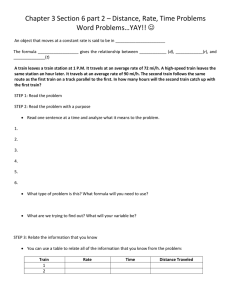Section 6.3 - Estimating Distance Traveled
advertisement
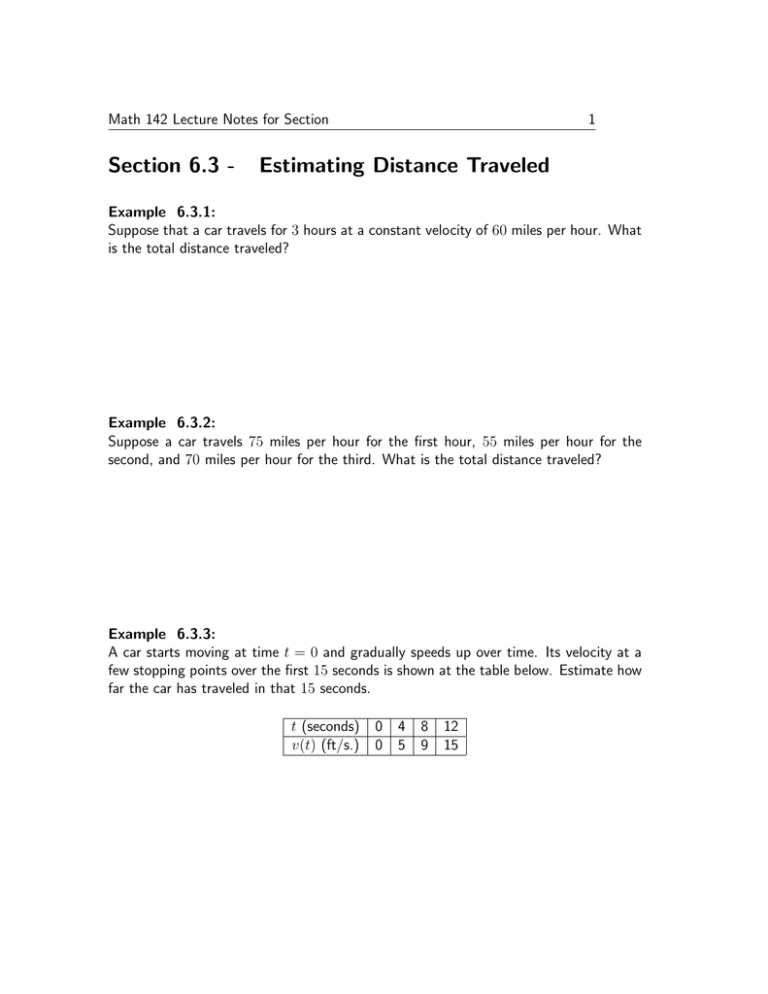
Math 142 Lecture Notes for Section Section 6.3 - 1 Estimating Distance Traveled Example 6.3.1: Suppose that a car travels for 3 hours at a constant velocity of 60 miles per hour. What is the total distance traveled? Example 6.3.2: Suppose a car travels 75 miles per hour for the first hour, 55 miles per hour for the second, and 70 miles per hour for the third. What is the total distance traveled? Example 6.3.3: A car starts moving at time t = 0 and gradually speeds up over time. Its velocity at a few stopping points over the first 15 seconds is shown at the table below. Estimate how far the car has traveled in that 15 seconds. t (seconds) v(t) (ft/s.) 0 0 4 5 8 9 12 15 Math 142 Lecture Notes for Section 2 Example 6.3.4: An object travels with velocity v(t) = t2 + 3 where t is in seconds and v(t) is measured in feet per second. Estimate how far the object traveled in the first 3 seconds. (a) By measuring at each second. (b) By measuring at each half second. Math 142 Lecture Notes for Section Example 6.3.5: Estimate the area under the graph of f (x) = x − 3x2 on [2, 5] using (a) Four parts of equal width and right endpoints. (b) Eight parts of equal width and left endpoints. 3 Math 142 Lecture Notes for Section 4 Definition 6.3.6: The area of the region that lies under the graph of the contiunous and positive function f is the limit of the sum Suggested Homework: 1-9 (odd), 17-23 (odd)
